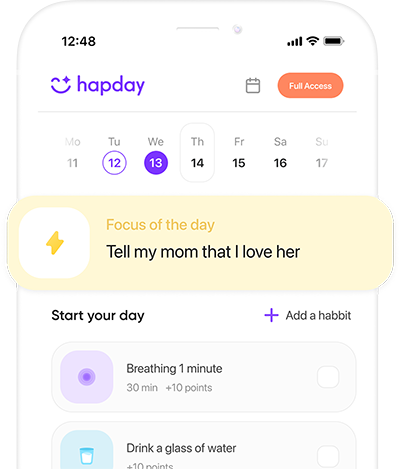Table of Contents
- Understanding Childhood Trauma
- The Science Behind Trauma
- Recognizing the Signs of Unresolved Trauma
- Practical Steps to Break Free from Childhood Trauma
- Seek Professional Help
- Build a Support Network
- Practice Mindfulness and Meditation
- Engage in Physical Activity
- Maintain a Healthy Lifestyle
- Explore Expressive Therapies
- Set Boundaries and Practice Self-Care
- Foster Self-Compassion and Acceptance
- Measuring Progress and Celebrating Success
- Conclusion
Understanding Childhood Trauma
What do we mean when we say childhood trauma? In essence, it’s any distressing event, or even a series, that overwhelms a child’s ability to cope. Think of instances like abuse—be it physical, emotional, or sexual—neglect, witnessing violence, or grappling with a significant loss. Each of these can ripple through one’s life, disrupting not just brain development but emotional balance and the ability to foster healthy relationships.
The Science Behind Trauma
The research evidence is compelling. The CDC, in partnership with Kaiser Permanente, carried out a fascinating study on Adverse Childhood Experiences (ACE). What showed up was a stark, undeniable link between having a high ACE score and facing health challenges, even affecting lifespan. Not just any challenges, but profound ones—chronic illnesses, mental struggles. Doesn’t it make you wonder: how much of adult health has its roots in those early years?
Recognizing the Signs of Unresolved Trauma
Recognizing unresolved trauma—it’s where healing begins. Sure, the symptoms vary, but some staples might catch your eye:
- Emotional Dysregulation: The see-saw of emotions that refuse to settle down.
- Hypervigilance: Feeling like you’re ever on edge, scanning for threats.
- Avoidance Behaviors: Steering clear of reminders, places, or people linked to the trauma.
- Negative Self-Perception: That sense of shame or guilt that overshadows self-worth.
- Difficulties in Relationships: Trust issues or fear of abandonment making every connect, disconnect.
Practical Steps to Break Free from Childhood Trauma
How do you break free? It’s not magic, nor is it passive. You need introspection paired with actionable steps. Here’s a step-by-step guide, rich with science-endorsed strategies.
1. Seek Professional Help
Therapy… The word itself holds promise. Engaging with a licensed therapist brings methods and insights that can gently untangle the knotted threads of trauma.
a. Cognitive-Behavioral Therapy (CBT)
CBT — it’s like a mental detox. Pinpointing and reshaping negative patterns. A study in the Journal of Consulting and Clinical Psychology discovered marked reductions in PTSD and depression symptoms among trauma survivors who underwent CBT. Remarkable, isn’t it?
b. Eye Movement Desensitization and Reprocessing (EMDR)
Then there’s EMDR. It sounds like science fiction but offers real hope by processing memories through guided eye movements. The American Journal of Psychiatry reports substantial gains in alleviating PTSD symptoms through EMDR. Is this the future of therapeutic healing?
2. Build a Support Network
But wait, therapy isn’t where support stops. Ever thought about a support network? Being with folks who “get it” can be profoundly comforting. Dive into a support group, or find an online space where recovery stories are shared.
3. Practice Mindfulness and Meditation
Mindfulness. Meditation. They aren’t just buzzwords — they ground you, regulate emotions. The Journal of Traumatic Stress discusses how these practices calm the storm of trauma symptoms, anchoring one in tranquility.
a. Mindful Breathing
Simple yet effective — mindful breathing. Carve out a moment daily to focus solely on your breath. It’s transformative.
b. Guided Meditation
Let guided meditation apps lead you. It’s like having a map to calmness and safety, and who doesn’t need that?
4. Engage in Physical Activity
Physical activity isn’t just about fitness; it mends the mind too. Exercise releases endorphins. Those elevate moods and curb stress.
a. Yoga
Yoga — a blend of movement, meditation, and breathing. The journal Trauma, Violence, & Abuse highlights its efficacy at quelling PTSD symptoms. It marries mind and body’s peace, doesn’t it?
b. Aerobic Exercise
Running, cycling, swimming… They aren’t just exercises—they are mood lifters, anxiety busters. Let them be a part of your emotional toolkit.
5. Maintain a Healthy Lifestyle
Living well isn’t optional. It’s pivotal.
a. Nutrition
Eating right influences your mood and vitality. Why not load up on vibrant veggies, lean proteins, and grains?
b. Sleep Hygiene
Then there’s the, oh so underrated, sleep. Make it regulated, make it quality. Prioritize an environment that whispers rest and relaxation.
6. Explore Expressive Therapies
Expressive therapies… think creativity with purpose.
a. Art Therapy
Art therapy — articulating the unspeakable through creativity. It offers a voice when words fail. Studies back its potency against trauma symptoms. Consider that.
b. Music Therapy
Rhythm, melody. Music therapy taps into these to heal and express emotions. It opens a new dialogue beyond words.

